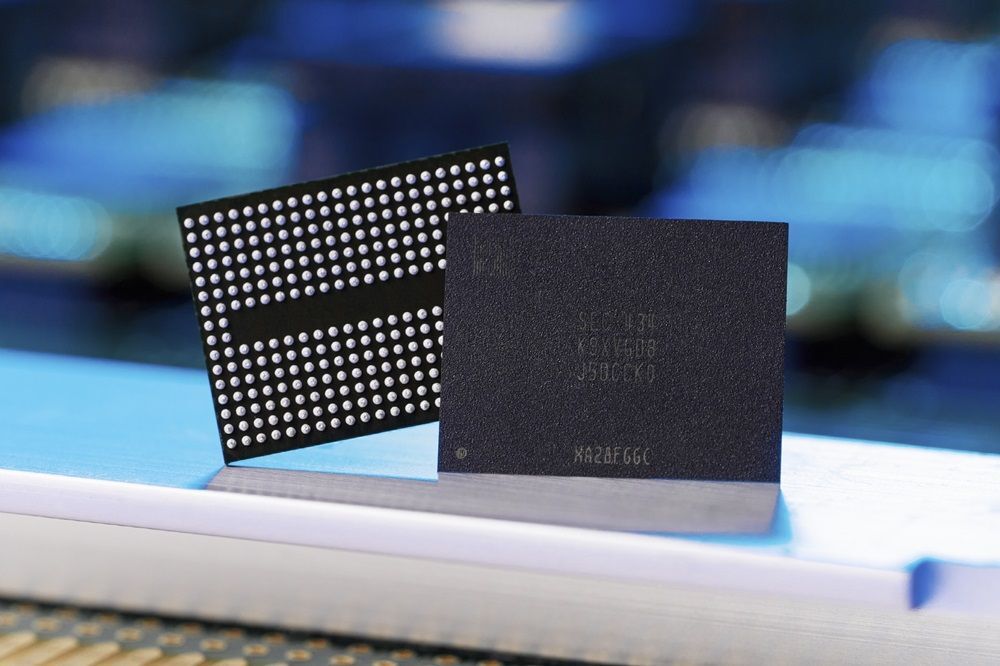I’m already avoiding buying newer SSDs because the durability is dropping off a cliff.
I’ll believe it when I see it. 4TB SSDs are still not affordable.
And Apple will finally sell the iPhone starting with 256GB
What do you need 256gb for? You don’t seriously store photos and videos on your phone… as the only place?
Yeah, I don’t get this. I still haven’t used more than ~115GB in years that I’ve been on iPhone. All my photos are in RAW (since supported) and I’ve got a huge lossless (or better) music library.
Granted I don’t have 100% of everything on my phone all the time, but even my iCloud storage is pretty low.
I guess since I have Apple Music I don’t have very much on my phone at any one time.
Most of my heavy usage are my Virtual Machines. But really, those don’t all have to be on at once. Am I really using windows that often?
My 100GB music library leaves less space than I’d like on a 128GB phone.
that’s what expandable storage (i.e. sd card) is for.
oh your phone does not know what that is?
that’s what expandable storage (i.e. sd card) is for.
oh your phone does not know what that is?
Technically the Pro Max already starts at 256 GB (starting with the 15 series iirc). But they simply removed the 128 GB option from the price stack.
are HDDs finally dying?
Not when 20TB drives are becoming cheaper :)
oh shit, you might be right, this might actually make HDDs more affordable as flash starts to catch up.
I doubt it will be this much. But at least it could lower the price, assuming it’s not already a thin margin for the manufacturers, and they will instead resort to using SMR instead of CMR
I’m sure we will get some “random” fire at some factory to drive prices up again.
That’s likely the point where spinning platters die in the marketplace.
Right now, spinning platters are around $12/tb. SSDs are around $75. Exact numbers fluctuate with features and market changes, but those are the ballpark. Cut in half, SSDs will be $38/tb, and then $19 in the next halving. Spinning platters aren’t likely to see the same level of reduction in that time period; they’re a mature technology.
I think once they reach double the price per tb, we’ll see a major collapse of the hard drive market. My thinking is that there’s a lot of four drive RAID 10 systems out there. With SSDs, those can be two drive RAID 1, and will still be faster. With half the drives, they can be twice the price and work out the same.
Spinning platters are already dead in many ways because even though they’ve increased in capacity, they haven’t meanigfully changed read/write speeds in decades, which makes moving the ever increasing data a huge pain.
This is it. Yes, spinning HDDs may be cheaper, but replacing mine with an SSD made my PC faster and quieter, especially on boot.
Most hardrives live in servers, as part of storage volumes where IO can be optimised well beyond the capability of a single disk.
For the boot disk on my workstation I am absolutely using an SSD, but for the hundreds of terabytes of largely static data that I need to keep archived? Spinning disks all the way. Not only to SSDs need to match on price, but they also have a long way to come in terms of longevity.
- The R/W cycles are infinite. At least until the head error out.
Yet apple will still charge $200 for 128gb
It’s almost as if oligopolies can manipulate prices regardless of availability
That will be helpful. Unless I want to prune my node, I should probably consider upgrading my storage space for my Monero node in the near future anyway.
Probably being paranoid, but it seems to me like one of the few untapped utilities of this much cheap storage is just increased surveillance. Hi resolution recording of everything, all the time.
Not really? Storage isn’t really much of a limiter, tape drives are huge. High res is more about the camera AFAIK, high res but low refresh rate(frame rate?) probably doesn’t have much of a transfer speed issue to necessitate SSD speeds.
I dunno. It’s all about lowering the barriers of accessibility. Tape drives are not widely adopted. Cloud camera monitoring is already common. Windows is pushing this recall feature, cameras are on everything, AI video analysis is taking off, and the populous is completely numb on privacy issues. My tech paranoia sense is usually right on track. We’ll see
GP was wrong about tapes, but plenty of these systems use hard drives already. They can use specialized drives that are cheap and have slow write speeds, because streaming video is a constant rate per second. They also don’t record unless there’s movement. The network is also a limiting factor.
I don’t think SSDs solve any problem, here.
“Could”
Amazing news! Unfortunately, if this comes to Brazil and 8tb SSD would be the price of a car
They already exist. $dayjob bought some 64GB ssds. They were about $7500USD per drive.
For 64gb? Did you mean tb or is there something unique about these drives?
That makes cars very cheap or technology very expensive
What do they cost you now?
R$ 5.460,00 (Brazilian Reais), the first comment is just exaggerating and having a ‘mongrel complex’ take. It is nowhere near the price of a car even today.
The prices will stay the same. Manufacturers will just make more profit.
Is that what has happened to the storage market historically?
Yup.
I’m optimistic. I’m making numbers out of my butt because I literally can’t remember.
But I think My 20GB SSD from 2010 was about $100. I used to dualboot.
Today, I can get a 512GB SSD for $50.
Today, I can get a 512GB SSD for $50.
Maybe 2.5" but not 2280
Regarding your 1st link: Receiving a geo block :|
Regarding your 2nd link:
I would only consider storge by known manufacturers like Intel, Samsung, Crucial/Micron, WD/SanDisk, Kioxia and maybe Kingston.
No experience with brands like Sabrent.
Same reason why I wouldnt shop for them on AliExpress. No confidence in those NAND.
Same SSDs are about 40% more expensive today than they were this time last year.
SSDs were relatively new in 2010, and priced accordingly. Now it’s just about increasing sizes and (hopefully) reliability. I just don’t think that all of a sudden we’ll have huge cheap SSDs - people are used to a certain price point and manufacturers will take advantage of that.
I got a 1TB SSD for 55€, so about 60 something dollars. Prices are certainly dropping
I’m all for it, and it’s just the usual “moores law” trend, I just wonder if we won’t hit a wall where (most!) users just won’t need it?
They’ll be useful for gamers, at least. With the increasing trend of companies caring less about properly optimizing the size of game installs and expecting gamers to have SSDs for texture loading on the fly, these drives will definitely see use. I currently have a 4TB HDD that has over 2.3TB of Steam games installed on it right now (roughly 100 games from tiny indie games to big AAA releases that are 40-80 gigs in size), and several newer games have an SSD listed as one of their minimum requirements.
Ya, didn’t say it will instantly be useless 😁, I’d pick up a 4TB or more because why not?
My first SSD was a 256GB (I really splurged on that one) now I have a 2TB for cheaper, soon it will be 20TB and then 200TB etc. Will video games grow that fast? My thought is it won’t and that’s all I guess 😊
NAND density is always useful for the ultra portable end, be it used in applications like phones, portable gaming devices, microcontroller boards and such, where space or pci-e lanes is often the limiting factor. when the capacity of nand grows, options become better, as nand usually doubles in capacity per chip.
Thermal is a wall to contend with as well. At the moment SSDs get the density from 3D stacking the planes of substrate that make up the memory cells. Each layer contributes some heat and at some point the layer in the middle gets too hot from the layers below and not being close enough to the top to dissipate the heat upwards fast enough.
One way to address this was the multi-level cell (MLC) where instead of on/off, the voltage within the cell could represent multiple bits. So 0-1.5v = 00, 1.6-3v = 01, 3.1-4.5v = 10, 4.6-5v = 11. But that requires sense amplifiers that can handle that, which aren’t difficult outright to etch, they just add complexity to ensure that the amplifier read the correct value. We’ve since moved to eight-level cells, where each cell holds an entire byte, and the error correction circuits are wild for the sense amplifiers. But all NAND FGMOS leak, so if you pack eight levels into a single cell, even small leaks can be the difference between sensing one level from another level. So at some point packing more levels into the cell will just lead to a cell that leaks too quickly for the word “storage” to be applied to the device. It’s not really storage any longer if powering the device off for half a year puts all the data at risk.
So once going upwards and packing hits a wall, the next direction is moving out. But the more you move outward, the further one is placing the physical memory cells from the controller. It’s a non-zero amount of distance and the speed of light is only so fast. One light-nanosecond is about 300 millimetres, so a device operating at 1GHz frequency clock has that distance to cover in a single tick of the clock in an ideal situation, which heat, quantum effects, and so on all conspire to make it less than ideal. So you can only go so far out before you begin to require cache in the in-between steps and scheduling of block access that make the entire thing more complex and potentially slow it down.
And there are ways to get around that as well, but all of them begin to really increase the cost, like having multi-port chips that are accessed on multi-channel buses, basically creating a small network inside your SSD of chips. Sort of how like a lot of CPUs are starting to swap over to chiplet designs. We can absolutely keep going, but there’s going to be cost associated with that “keep going” that’s going to be hard to bring down. So there will be a point where that “cost to utility” equation for end-users will start playing a much larger role long before we hit some physical wall.
That said, the 200 domain of layers was thought to be the wall for stacking due to heat, there was some creative work done and the number of layers got past 300, but the chips do indeed generate a lot more heat these days. And maybe heat sinks and fans for your SSD aren’t too far off in the future, I know passive cooling with a heat sink is already becoming vogue with SSDs. The article indicated that Samsung and SK hynix predict being able to hit 1000+ layers, which that’s crazy to think about, because even with the tricks being employed today to help get heat out of the middle layers faster, I don’t see how we use those same tricks to hit past 500+ layers without a major change in production of the cells, which usually there’s a lot of R&D that goes behind such a thing. So maybe they’ve been working on something nobody else knows about, or maybe they’re going to have active cooling for SSDs? Who knows, but 1000+ layers is wild to think about, but I’m pretty sure that such chips are not going to come down in prices as quickly as some consumers might hope. As it gets more complex, that length of time before prices start to go down starts to increase. And that slows overall demand for more density as only the ones who see the higher cost being worth their specific need gets more limited to very niche applications.
Its already been 6 years since the first 100TB SSD released and I still don’t think anyone has bothered to dethrone it last I checked. Density and number of layers possible have both increased since then. I imagine part of it is just a performance issue though; 10 10TB SSDs are gonna be faster than 1 100TB SSD.
At the consumer level, the usage of smaller form factors will probably mean more density will still be useful. Things like the steamdeck drives will benefit for a while.
64TB ssds are fairly common in the enterprise market now, I don’t think they were 6 years ago. It’s possible we’ll see 128TB SSDs become fairly common on servers in a few years.
We’ve already hit a perceived user experience limit. The perception of responsiveness in blind tests between SATA and NVMe SSDs isn’t always apparent–people sometimes say the SATA drive is faster–even though the speed difference on paper is substantial.
IMO, programmers haven’t exploited the possibilities of extremely fast mass storage yet. The orders of magnitude difference in speed isn’t fully realized. It’s not just faster, it’s faster in a way that requires new approaches. Unlike multicore CPUs over a decade ago, this change in thinking has gone relatively unnoticed by programmers.
Well maybe, it’s just storage like HD or RAM.
But to do what (outside scientific software)?
most users already dont use what theyve got. its more about reducing physical size for the masses… these new techs will allow for even smaller storage for thinner, more efficient devices.
i think only some power users (im a data horader) and commercial interests care about bulk storage
I can’t believe how much mileage I’ve gotten out of my 512GB SSDs on my laptops. And my “big” backup disks are hand me down 1TB HDs my friend didn’t need. I don’t do video, though.
my collection is small compared to some, but ive got about 22 4tb drives in use in various arrays… but its mostly video.
I remember it being a big space sink when I was editing video. Now all I have is DVD rips of my collection and those are nice and compact.
Soon the new COD will weigh 5TB
COD will ship as a 5TB HDD cartridge :D
Ww will go back to the cartridge bays.
















